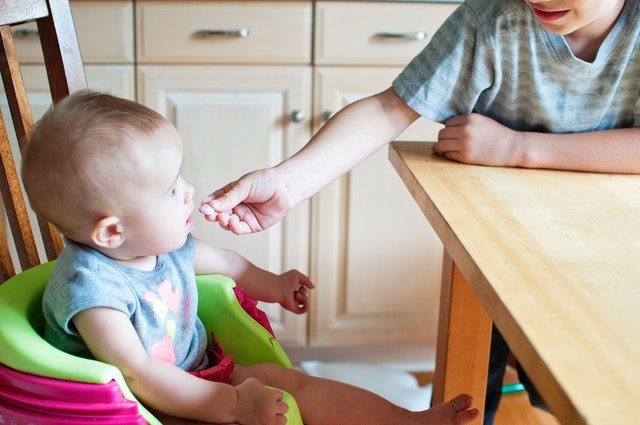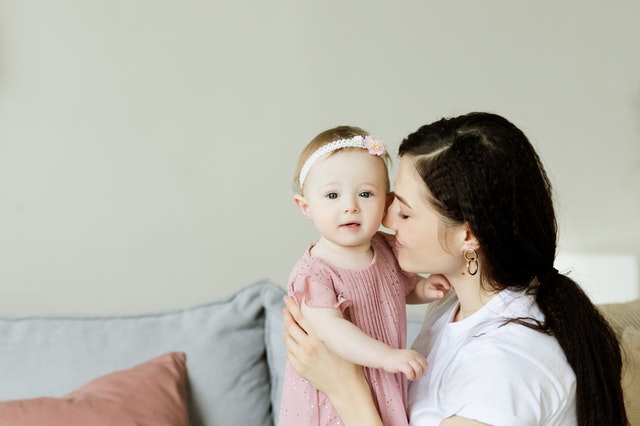Baby-led weaning is a great way to introduce your baby to natural foods, flavours and textures and allows a little more freedom once your baby hits weaning age. Baby-led weaning is essentially where your baby feeds themselves finger foods, instead of going down the traditional spoon-feeding route, and they choose how much they want to eat what you give them at mealtimes. Your little one’s development is obviously crucial and baby-led weaning has been found to improve your baby’s ability to develop their fine and gross motor skills and supports other things, such as hand-eye coordination, chewing skills and even healthy eating habits.
Baby-led weaning also helps babies to learn self-regulation – eating when they are hungry and stopping when they feel full However, as great baby-led weaning is, it’s important to remember that it isn’t right for every baby and family and it comes with its own set of worries and concerns, especially in the early stages. With this in mind, here are 5 things you should know about baby-led weaning!
The difference between gagging and choking
When it comes to baby-led weaning, the fear of choking is often the main concern that parents have and this is completely understandable. However, contrary to popular belief, baby-led weaning is no more of a risk when it comes to choking than traditional puree weaning, but the key takeaway is to learn the difference between your baby gagging – a normal reflex when learning to eat – and choking.
Gagging is the natural way that your baby’s body protects itself from choking and you may notice your baby pushing their tongue out or doing a retching or coughing motion to bring foods forward in their mouth. They are simply learning how to move food around their mouths and chew, then swallow. If baby-led weaning fills you with the worry of gagging and choking, then you can take an infant first aid course beforehand to make you feel more comfortable with it and remember, loud and red – go ahead, quiet and blue – they need help from you.
Finger foods to start with
In your baby’s first year, a lot of their nutritional needs will come from their milk consumption, but starting them on solid foods as soon as they are able is a great way to give them the nutrients that they can’t get from breastmilk or formula and get them used to the different taste, smells and textures that foods have.
When you start baby-led weaning, start small and find foods that your baby is comfortable with. Examples of first finger foods can include broccoli, banana, avocado, sweet potato, flaked salmon and omelettes – foods that can but cut and prepared in hand-sized portions for your baby to grab. Start with single food items and introduce new things one at a time so that you can monitor your baby’s taste interests and keep track of any potential allergies.
Prepare for the mess
Whilst traditional puree feeding can get quite messy, nothing can prepare you for the mess that comes with baby-led weaning! Your baby is discovering things for the first time, so expect a lot of food to get thrown on the floor and smushed into their highchair. Letting your baby get messy whilst they learn and experience foods for the first time is a huge part of their development when it comes to food and gets them used to touching different textures and having food on their face.
It’s best to just let the mess happen naturally, but there are some great tools out there that help to contain the mess slightly! Weaning bibs are made using a soft and waterproof material and protect your baby’s clothes from the mess and stains that come from baby-led weaning, whilst bamboo dishes and cutlery allow your baby to get used to eating from a dish and moving food around their plates. Reusable bamboo cloths are a great alternative to baby wipes and help to wipe up messy faces after mealtimes.
Some foods to avoid 
Whilst there are some foods that are absolutely fine to give your baby straight away, there are a few things to remember and foods to avoid when it comes to baby-led weaning. Honey should be completely avoided until your baby is over 1 year old due to the risk of botulism, which is a very rare, but serious illness. You will also want to avoid foods that have high levels of salt, sugar and sweeteners.
By giving your baby high levels of sugar, it can get their delicate palettes used to sweeter foods as they grow, which can cause dietary issues when they are older. Your baby’s kidneys are very sensitive and simply cannot handle much salt, if at all, so try to avoid foods high in sugar and don’t add salt to any dishes or foods you prepare for them.
If there are any known allergies in your family, such as nuts, fish, eggs or dairy, then you should talk to your doctor before starting any type of weaning and learn the best approach you can take. It might be a case of slowly introducing single food groups in a controlled environment, or avoiding them altogether, but your doctor is the best form of advice in this case.
Have fun!
A lot of parents get very overwhelmed when it comes to baby-led weaning, but the important thing to remember is to have fun! Baby-led weaning is a fantastic way to bond with your baby and learn more about them, whilst watching them learn and grow as they discover new foods, tastes and textures. The best way to have fun with baby-led weaning is to just embrace it and get ready for your little one to discover new things for the first time.

